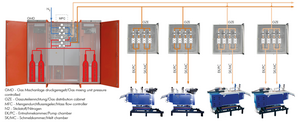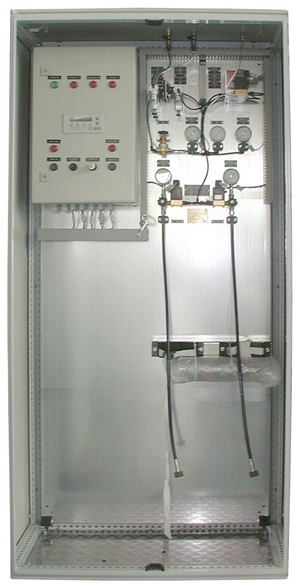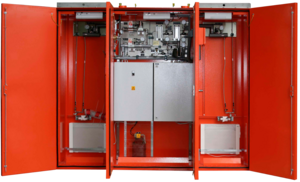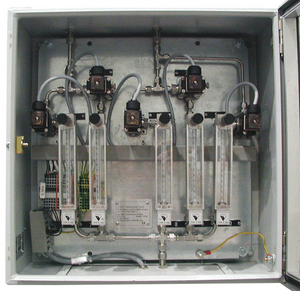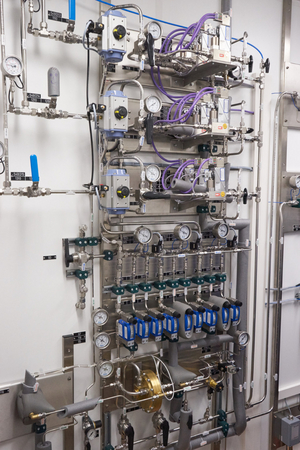Protective Gas Mixing System GMA
The RAUCH Protective Gas Mixing System GMA ensures that reactions between liquid Magnesium melt and oxygen (air) are prevented, as the melt surface is constantly covered with protective gas. The protective gas is prepared in the Protective Gas Mixing System GMA and it essentially comprises of a carrier gas and the actual protective gas (HFC or SO2).
Design:
- As an individual (for one Mg furnace) or as a central Protective Gas Mixing System GMA (for multiple furnaces).
- Volume-controlled (GMM) or pressure-controlled (GMD) design.
- Gas Distribution Cabinet (GZE) required when using pressure-controlled systems.
- Large plants possible with gas supply containers.
Advantages of the Protective Gas Mixing System GMA:
- Protective gas volume and concentration is automatically controlled depending on the operating condition of the Magnesium furnace.
- Parameter adjustment at the gas supply control panel or on the furnace control system.
- Protective Gas Mixing System GMA monitors all process-relevant pressures and flow rates and signals this in the event of a fault.
- Automatic bottle switching for protective gas bottles.
- In the event of a fault (e.g. power failure), an immediate switch to emergency operation is possible and the safe cooling of Magnesium melt is ensured.
- When using SO2 as protective gas, a gas safety cabinet with leak sensors and ventilation system is realised.

